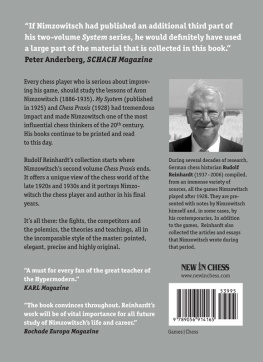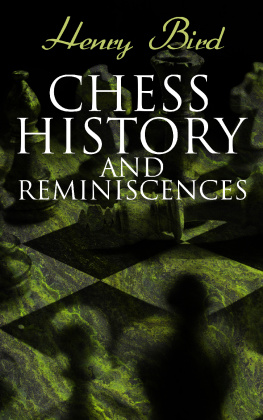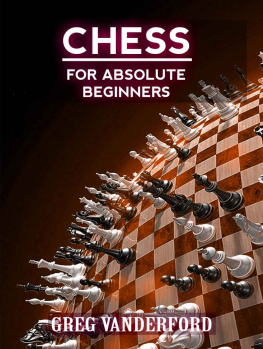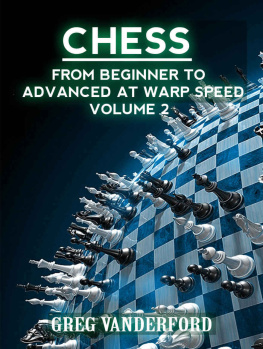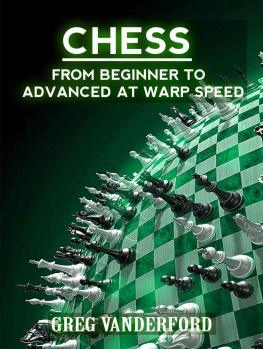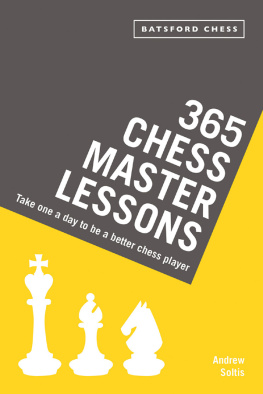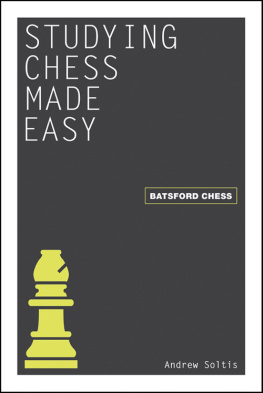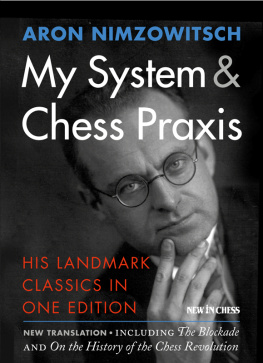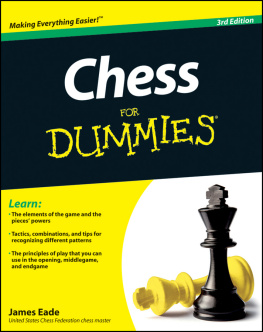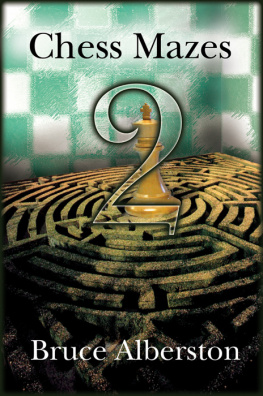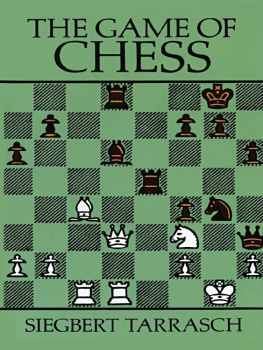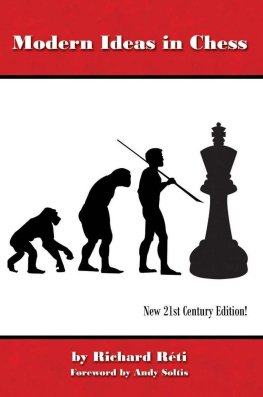Aron Nimzowitsch 19281935
We thank
my son-in-law, my husband, our father and father-in-law, our grandfather for the shared years that we were able to spend with him.
With all his numerous interests and knowledge, he accompanied us caringly and lovingly.
From youth, a top priority of his free time was the game of chess, to which we owe this book and its publication, with the help of his publisher, Mr. Nickel.
MARGARETE BOENKE, HELGA REINHARDT, KATHI AND ACHIM REINHARDT, VICKI AND MICHAEL REINHARDT, TILL SCHWEERS, AMELIE AND JUNE REINHARDT
Rudolf Reinhardt
Aron Nimzowitsch 19281935
Games Commentaries Articles
New In Chess 2013
2013 New In Chess
English edition published by New In Chess, Alkmaar, The Netherlands, in cooperation with Edition Marco/Verlag Arno Nickel.
www.newinchess.com
This edition is published by arrangement with Edition Marco/Verlag Arno Nickel.
All rights reserved. No part of this book may be reproduced, stored in a retrieval system or transmitted in any form or by any means, electronic, mechanical, photocopying, recording or otherwise, without the prior written permission from the publisher.
The publisher thanks Michael Negele, Andreas Saremba and the Reinhardt family for the photography provided.
Editor: Arno Nickel
Russian-German translations: Otto Dietze (1928 tournaments), Thomas Lemanczyk
Text and source compilation: Kathi and Helga Reinhardt, Siegfried Schnle
Cover design: Volken Beck
Editor English edition: Peter Boel
Translators: Daphne and Al Lawrence
Proofreading: George Kosinski
Production: Joop de Groot
Have you found any errors in this book? Please send your remarks to and implement them in a possible next edition.
ISBN 978-90-5691-416-5
Foreword

A ron Nimzowitsch is numbered amongst those great names in chess, such as Pillsbury and Rubinstein, who threatened the champions but were never granted the opportunity to play for the world title. Nimzowitsch faced four World Champions, scoring a narrow plus against Lasker and Euwe, suffering a catastrophe against Capablanca, losing five times without a single win, while scoring three combative wins against Alekhine, to nine losses. Nimzowitsch, however, fascinated the chess world with the originality of his ideas.
The editor of this book has chosen as his topic a particularly felicitous moment in Nimzowitschs career, when the maturation of Nimzowitschs theories coincided with a growing confidence in his own playing powers across the board. This culminated in a creative efflorescence of outstanding victories in individual games as well as superb results in tournaments. He scored outstanding results at Berlin 1928, San Remo 1930 and Bled 1931, but his chessic perihelion remains his fabulous first prize at Carlsbad 1929, ahead of most of the mightiest of the day.
Amongst Nimzowitschs victims during this period were, as noted above, both Euwe and Lasker as well as Rubinstein, Spielmann, Tartakower, Vidmar, the rising Scandinavian star Stahlberg, not to mention Bogoljubow, whom Nimzowitsch dominated at a time when Bogoljubow was twice the official challenger to Alekhines World Championship.
My book Aron Nimzowitsch: A Reappraisal was first published in 1974 and has remained in print in various versions ever since. It took me five years to write and involved research into writings in Russian, German, Swedish and Danish, generally inaccessible to an English speaking audience. I must say I believed I had succeeded in sourcing all of the surviving Nimzowitschiana which existed beyond the well-known translations of My System and Chess Praxis. But as the work of Reinhardt proves, this rich source still hadnt been exhausted.
Both of Nimzowitschs treatises, purveying his theoretical and practical insights and formulations, were published before his string of successes from 1928. These latter are now covered by this new book. The author has performed a signal service by rescuing Nimzowitschs own notes to many of these later victories, some of which have hitherto eluded publication, thus contributing in significant fashion to the ever unfolding field of Nimzowitsch scholarship.
What most entranced me about this new publication was the fact that seemingly lost material has been unearthed which in particular sheds fresh light on Nimzowitschs character and psychology. It is well known that in a somewhat endearing way Nimzowitsch was an obsessive self-promoter. I found it both enlightening and amusing to see the comments Nimzowitsch made, never before seen in English, penned after the great tournament of Bled 1931. As we know, this represented a huge triumph for World Champion Alekhine. It is fascinating to observe how Nimzowitsch justifies his record against Alekhine (three losses in 1930 and 1931 from three games) by a most eloquent argument. It was no disgrace to lose to Alekhine, but Nimzowitsch continued the battle way beyond the conflict on the board.
This book is packed with such insights, never before available to English-language readers, which intensifies our understanding of one of the most complex and ingenious grandmasters ever to wield a pawn or a pen.
July 2013
Raymond Keene
Anthologists Foreword
A s a young student (in 1959), for my birthday I asked for the recently published, new edition of Nimzowitschs Mein System with the of course naive hope of then being on the correct path to chess mastery. That failed, but the style of this book made an indelible impression on me.
In the ensuing years, I was quite disturbed by the fact that there was no comprehensive compilation of Nimzowitschs games, apart from Reinfelds and Nielsens editions, later supplemented by Keenes book Nimzowitsch: A Reappraisal, which is worth reading. A little over twenty years ago, I thought it might be well worth skipping a summer vacation in favour of copying from his books the over 200 games played by Nimzowitsch, and putting them in chronological sequence. Later I was able to expand this collection significantly with the help of various chess newspapers and tournament books from the years 1902 to 1935.
The intriguing outcome: Nimzowitsch commented almost exclusively on his own games, but he commented on them extensively. He had already published in magazines, with occasionally conflicting commentaries, almost all the games in his books. With increasing age, Nimzowitsch saw in the publication of his games not only the opportunity to propagate his system, but the purpose of chess pedagogy as well.
So the idea came about to compile a collection of all of his tournament and competitive games that hadnt yet appeared in book form before today. The games should be presented with contemporaneous explanations, as far as possible, and, in particular, by Nimzowitsch himself. The result was a rather complete collection of annotated games by Nimzowitsch.
After retiring from my profession in the year 2000, I was encouraged by friends to edit this collection for publication. In the process, it quickly became apparent that such a work would be much too large, especially considering that an unavoidable overlapping with Nimzowitschs own books would appear, which would be undesirable for the reader. That led to the idea to include only those games, fragments and articles that were published by Nimzowitsch after 1928 (after the appearance of Die Praxis Meines Systems). Therefore, the collection now in hand can also be regarded as an (unauthorized) sequel to Nimzowitschs books, with no intention of rivalry. Getting embroiled in the current theoretical literature (openings, etc.) was the last thing I wanted. The publication of this book is intended instead in recognition of Nimzowitsch through the reproduction of his articles, which are scattered about and difficult to locate today. In this respect, it tracks historical trends.
Next page
